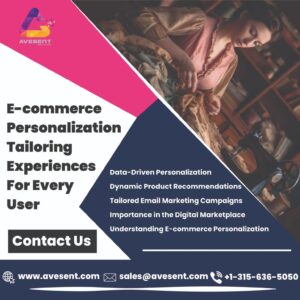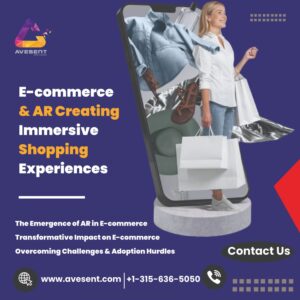In the fast-evolving world of e-commerce, brands and retailers are constantly looking for ways to provide better customer experiences and increase conversion rates. One technology that is transforming the online shopping landscape is Augmented Reality (AR). By blending virtual elements with the real world, AR gives consumers a more interactive and immersive shopping experience. E-commerce platforms are embracing this technology to enhance product pages, offering customers a unique way to visualize products before making a purchase.
In this blog, we’ll explore how augmented reality is revolutionizing e-commerce, its benefits, and examples of its use in product pages.
What is Augmented Reality (AR)?
Augmented Reality is a technology that overlays digital content—such as images, videos, or 3D models—onto the real world, typically viewed through smartphones, tablets, or AR glasses. In e-commerce, AR allows customers to interact with virtual versions of products, helping them better understand the size, appearance, and functionality of items they are interested in purchasing.
By enhancing the digital shopping experience, AR bridges the gap between in-store and online shopping.
How Augmented Reality Enhances E-commerce Product Pages
1. Visualization of Products in Real Time
One of the biggest challenges for online shoppers is visualizing how products will look in their environment. With AR, customers can place virtual objects in their space using their smartphone cameras. For instance, a customer buying furniture can see how a couch or table will fit into their living room, or a fashion enthusiast can try on clothes or accessories digitally.
Benefits:
- Allows customers to “try before they buy.”
- Reduces uncertainty around product dimensions, colors, and fit.
- Increases confidence in purchasing decisions.
2. Enhanced Customer Engagement
AR makes shopping more engaging and interactive. Instead of simply scrolling through product images, customers can manipulate 3D models of products, zoom in for a closer look, and view items from all angles. This increased engagement often leads to longer browsing sessions, which in turn can increase the likelihood of a purchase.
Key Engagement Tools:
- 3D product viewers.
- Virtual “try-on” features for clothing, makeup, and accessories.
- AR-enabled product manuals and demos.
3. Improving Personalization
Personalization is key to delivering a memorable shopping experience, and AR helps take it to the next level. E-commerce platforms can use AR to tailor the shopping experience based on customer preferences. For example, beauty brands use AR to allow customers to try on different shades of makeup that suit their skin tone, while fashion brands offer virtual fitting rooms where customers can try clothes in their size.
Pro Tip: By offering personalized AR experiences, brands can increase customer satisfaction and loyalty.
4. Reducing Return Rates
Returns are a significant challenge in e-commerce, often caused by customers receiving products that do not meet their expectations. AR helps alleviate this issue by providing a more accurate representation of products. Shoppers can see exactly how items will look and function in their space, which reduces the likelihood of dissatisfaction after purchase.
Results:
- Fewer returns due to mismatched expectations.
- Increased customer satisfaction with their purchases.
5. Building Trust and Transparency
In the world of online shopping, trust plays a significant role in purchasing decisions. AR builds trust by allowing customers to closely examine products as if they were physically in-store. This transparency reassures customers that what they see is what they’ll get, thereby increasing their confidence in the brand.
Key Features to Build Trust:
- High-quality 3D product models.
- Interactive AR product demos.
- Detailed, close-up views of product features.
Examples of AR in E-commerce
1. IKEA Place App
IKEA’s AR app, IKEA Place, allows users to place true-to-scale 3D models of furniture in their homes. Shoppers can see how items will fit and look in their actual living spaces, helping them make more informed purchasing decisions.
2. Sephora Virtual Artist
The beauty retailer Sephora uses AR to offer a virtual try-on feature. Customers can use their smartphones or tablets to try different makeup products—such as lipstick, foundation, and eyeshadow—on their faces in real time. This AR experience reduces the guesswork and helps customers find products that suit their style.
3. War by Parker Virtual Try-On
War by Parker, an online eyewear brand, uses AR to allow customers to try on glasses from the comfort of their homes. Shoppers can use their camera to see how different styles look on their face, making it easier to choose the perfect pair.
4. L’Oreal Makeup Genius
L’Oreal’s Makeup Genius app uses AR to let customers try on makeup virtually. This app not only enhances the shopping experience but also encourages customers to try products they might not have considered otherwise, boosting sales.
How to Implement AR in E-commerce Product Pages
1. Choose the Right AR Platform
To successfully integrate AR into your e-commerce product pages, you’ll need a reliable AR platform. There are various platforms available, such as Zakeke, Threekit, and Sayduck, that offer tools to create 3D models and integrate AR functionality.
2. Create High-Quality 3D Models
The success of AR in e-commerce relies heavily on the quality of the 3D models. Products should be visually appealing, detailed, and accurately scaled to ensure that customers get an accurate representation. Invest in high-quality 3D rendering services to create lifelike models.
3. Optimize for Mobile Devices
Since many shoppers use their smartphones for online shopping, ensure that your AR features are optimized for mobile devices. Make sure that the AR experience is seamless, responsive, and works well across different screen sizes and operating systems.
4. Promote AR Features
Once you’ve implemented AR, don’t forget to promote it! Highlight the AR features on product pages and in your marketing campaigns to encourage customers to try them out.
Conclusion: The Future of E-commerce with AR
Augmented Reality is rapidly changing how consumers interact with products online. By allowing customers to visualize products in their own space, try on virtual items, and interact with 3D models, AR enhances the shopping experience and builds trust. For e-commerce brands, adopting AR can significantly boost engagement, increase conversions, and reduce return rates.
As AR technology continues to evolve, its role in e-commerce will only grow. Investing in AR solutions today can give your business a competitive edge, offering customers a cutting-edge shopping experience that feels personal, immersive, and highly engaging.




